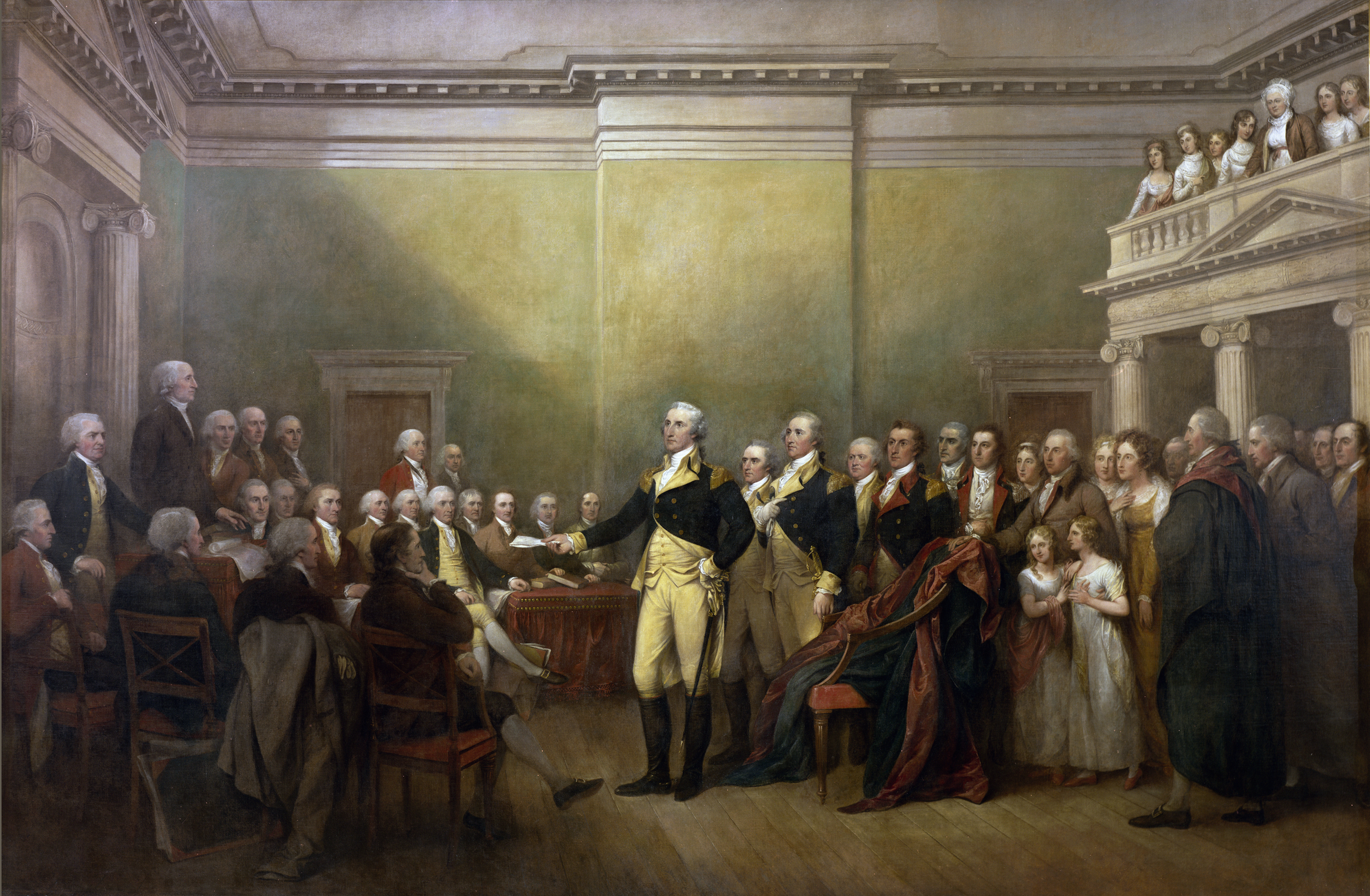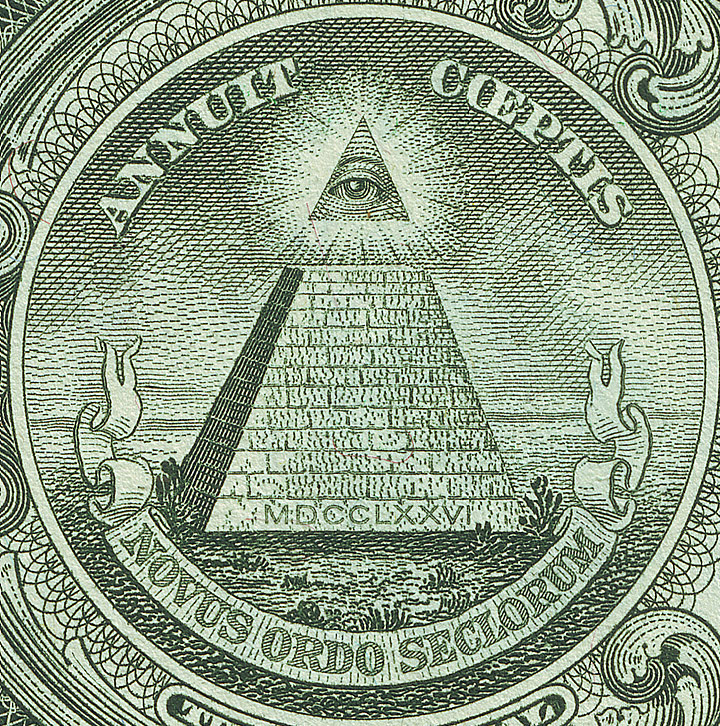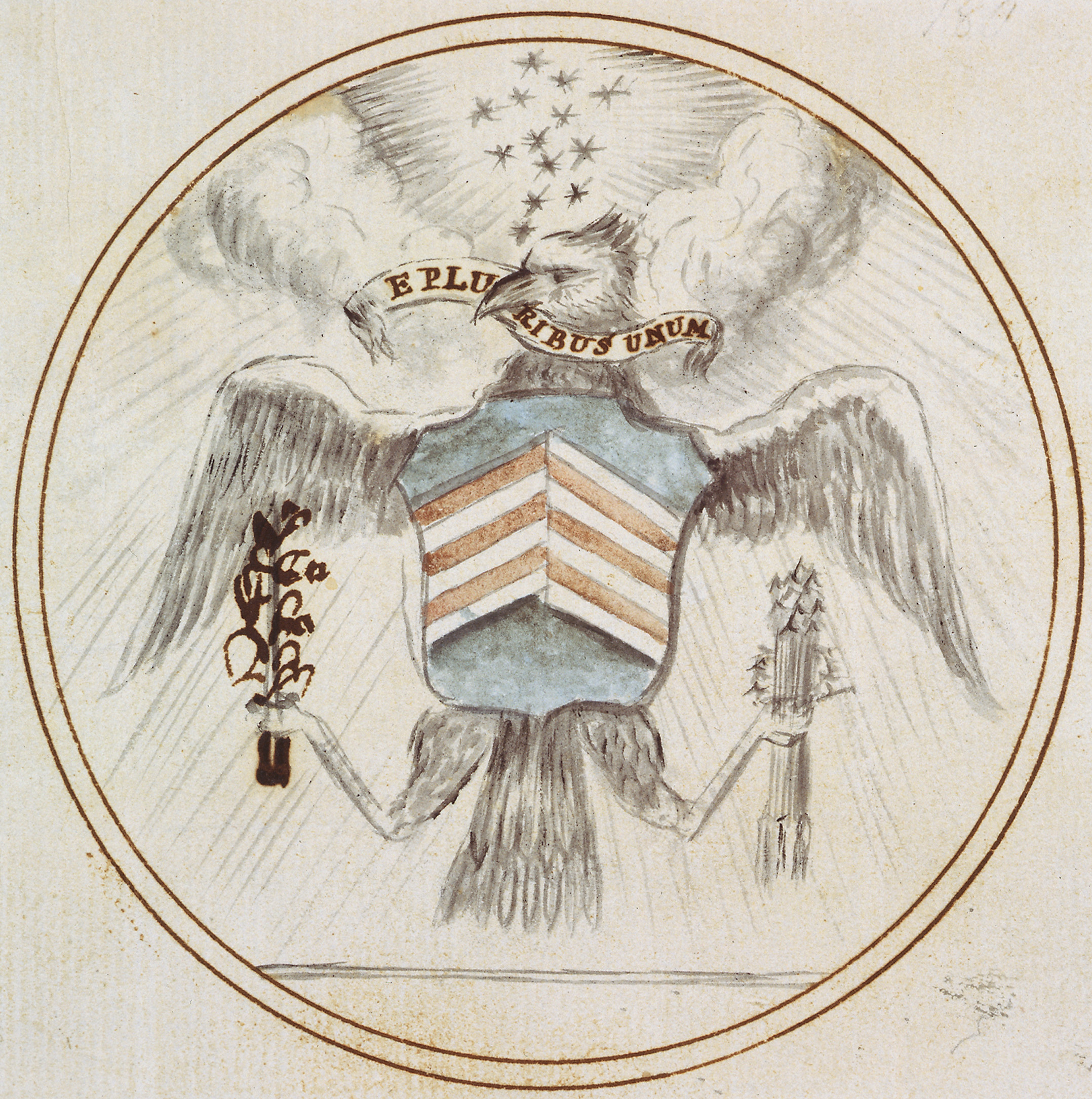|
Novus Ordo Seclorum
The phrase ''Novus ōrdō sēclōrum'' (, ; "New order of the ages") is the second of two mottos added by the secretary of the Congress of the Confederation, Charles Thomson, on the reverse (the back side) of the Great Seal of the United States (the first motto is '' Annuit cœptis''). Origin and phrase meaning The phrase is a reference to the fourth ''Eclogue'' of Virgil, which contains a passage (lines 5-8) that reads: The forms ''saecla'', ''saeclorum'' etc. were normal alternatives to the more common ''saecula'' etc. throughout the history of Latin poetry and prose. The form ''saeculorum'' is impossible in hexameter verse: the ''ae'' and ''o'' are long, the ''u'' short by position. The word ''seclorum'' does not mean "secular", but is the genitive (possessive) plural form of the word ''saeculum'', meaning (in this context) generation, century, or age. ''Saeculum'' did come to mean "age, world" in late, Christian Latin, and "secular" is derived from it, through ''secu ... [...More Info...] [...Related Items...] OR: [Wikipedia] [Google] [Baidu] |
Congress Of The Confederation
The Congress of the Confederation, or the Confederation Congress, formally referred to as the United States in Congress Assembled, was the governing body of the United States of America during the Confederation period, March 1, 1781 – March 4, 1789. A unicameral body with legislative and executive function, it was composed of delegates appointed by the legislatures of the several states. Each state delegation had one vote. It was preceded by the Second Continental Congress (1775–1781) and was created by the Articles of Confederation and Perpetual Union in 1781. The Congress continued to refer itself as the Continental Congress throughout its eight-year history, although modern historians separate it from the two earlier congresses, which operated under slightly different rules and procedures until the later part of American Revolutionary War. The membership of the Second Continental Congress automatically carried over to the Congress of the Confederation when the latte ... [...More Info...] [...Related Items...] OR: [Wikipedia] [Google] [Baidu] |
Lewis And Short
''A Latin Dictionary'' (or ''Harpers' Latin Dictionary'', often referred to as Lewis and Short or L&S) is a popular English-language lexicographical work of the Latin language, published by Harper and Brothers of New York in 1879 and printed simultaneously in the United Kingdom by Oxford University Press. History The work is usually referred to as Lewis and Short after the names of its editors, Charlton T. Lewis and Charles Short. It was derived from the 1850 English translation by Ethan Allen Andrews of an earlier Latin-German dictionary, ''Wörterbuch der Lateinischen Sprache'', by the German philologist Wilhelm Freund, in turn based on I.J.G. Scheller’s Latin–German dictionary of 1783. The Andrews translation was partially revised by Freund himself, then by Henry Drisler, and was finally edited by Short and Lewis. The division of labour between the two editors was remarkably unequal. Short, a very thorough but slow worker, produced material for the letters A throug ... [...More Info...] [...Related Items...] OR: [Wikipedia] [Google] [Baidu] |
United States National Motto
The modern motto of the United States of America, as established in a 1956 law signed by President Dwight D. Eisenhower, is "In God we trust".{{cite web, url=http://www.treasury.gov/about/education/Pages/in-god-we-trust.aspx , archive-url=https://web.archive.org/web/20110310163407/http://www.treasury.gov/about/education/Pages/in-god-we-trust.aspx , archive-date=2011-03-10 , title=U.S. on the History of "In God We Trust", publisher=United States Department of the Treasury, access-date=2009-04-22United States Public Law 84-851 United States Public Law 84-851. The phrase first appeared on U.S. coins in 1864. History The 1956 law was the first establishment of an official motto for the country, although '' |
List Of U
A ''list'' is any set of items in a row. List or lists may also refer to: People * List (surname) Organizations * List College, an undergraduate division of the Jewish Theological Seminary of America * SC Germania List, German rugby union club Other uses * Angle of list The angle of list is the degree to which a vessel heels (leans or tilts) to either port or starboard at equilibrium—with no external forces acting upon it. If a listing ship goes beyond the point where a righting moment will keep it afloat, it ..., the leaning to either port or starboard of a ship * List (information), an ordered collection of pieces of information ** List (abstract data type), a method to organize data in computer science * List on Sylt, previously called List, the northernmost village in Germany, on the island of Sylt * ''List'', an alternative term for ''roll'' in flight dynamics * To ''list'' a building, etc., in the UK it means to designate it a listed building that may ... [...More Info...] [...Related Items...] OR: [Wikipedia] [Google] [Baidu] |
List Of National Mottos
This article lists state and national mottos for the world's nations. The mottos for some states lacking general international recognition, extinct states, non-sovereign nations, regions, and territories are listed, but their names are not bolded. A state motto is used to describe the intent or motivation of the state in a short phrase. For example, it can be included on a country's flag, coat of arms, or currency. Some countries choose not to have a national motto. Current sovereign countries *: '' There is no god but God; Muhammad is the messenger of God.'' ( ar, لا إله إلا الله، محمد رسول الله; ) *: ''You, Albania, give me honour, give me the name Albanian'' ( sq, Ti Shqipëri Më Jep Nder, Më jep Emrin Shqipëtar) *: ''By the people and for the people'' ( ar, بالشعب و للشعب; . *: ''Strength united is stronger'' ( la, Virtus Unita Fortior). *: No official motto. *: ''Each endeavouring, all achieving'' *: ''In Union and Liberty'' ( es, ... [...More Info...] [...Related Items...] OR: [Wikipedia] [Google] [Baidu] |
List Of Latin Phrases
__NOTOC__ This is a list of Wikipedia articles of Latin phrases and their translation into English. ''To view all phrases on a single, lengthy document, see: List of Latin phrases (full)'' The list also is divided alphabetically into twenty pages: * List of Latin phrases (A) * List of Latin phrases (B) * List of Latin phrases (C) * List of Latin phrases (D) * List of Latin phrases (E) * List of Latin phrases (F) * List of Latin phrases (G) * List of Latin phrases (H) * List of Latin phrases (I) * List of Latin phrases (L) * List of Latin phrases (M) * List of Latin phrases (N) * List of Latin phrases (O) * List of Latin phrases (P) * List of Latin phrases (Q) * List of Latin phrases (R) * List of Latin phrases (S) * List of Latin phrases (T) * List of Latin phrases (U) * List of Latin phrases (V) See also * Latin influence in English * Latinism Lists * List of abbreviations used in medical prescriptions * List of ecclesiastical abbreviations * List of ... [...More Info...] [...Related Items...] OR: [Wikipedia] [Google] [Baidu] |
New World Order (conspiracy Theory)
The New World Order (NWO) is a conspiracy theory which hypothesizes a secretly emerging totalitarian world government. The common theme in conspiracy theories about a New World Order is that a secretive power elite with a globalist agenda is conspiring to eventually rule the world through an authoritarian one-world government—which will replace sovereign nation-states—and an all-encompassing propaganda whose ideology hails the establishment of the New World Order as the culmination of history's progress. Many influential historical and contemporary figures have therefore been alleged to be part of a cabal that operates through many front organizations to orchestrate significant political and financial events, ranging from causing systemic crises to pushing through controversial policies, at both national and international levels, as steps in an ongoing plot to achieve world domination. Before the early 1990s, New World Order conspiracism was limited to two American co ... [...More Info...] [...Related Items...] OR: [Wikipedia] [Google] [Baidu] |
Eye Of Providence
The Eye of Providence (or the All-Seeing Eye of God) is a symbol that depicts an eye, often enclosed in a triangle and surrounded by rays of light or glory, meant to represent divine providence, whereby the eye of God watches over humanity. A well-known example of the Eye of Providence appears on the reverse of the Great Seal of the United States, which is depicted on the United States one-dollar bill. Use by governments and confederations United States In 1782, the Eye of Providence was adopted as part of the symbolism featured on the reverse side of the Great Seal of the United States. It was first proposed as an element of the Great Seal by the first of three design committees in 1776, and is thought to be the suggestion of the artistic consultant, Pierre Eugene du Simitiere, Bureau of Public Affairs. July 2003.The Great Seal of the United States" Washington: U.S. Department of State Archive; See alsoGreat Seal" Bureau of Public Affairs. 2002. Both retrieved 6 Ju ... [...More Info...] [...Related Items...] OR: [Wikipedia] [Google] [Baidu] |
E Pluribus Unum
''E pluribus unum'' ( , , ) – Latin for "Out of many, one" (also translated as "One out of many" or "One from many") – is a traditional motto of the United States, appearing on the Great Seal along with '' Annuit cœptis'' (Latin for "he approves the undertaking it. 'things undertaken') and '' Novus ordo seclorum'' (Latin for "New order of the ages") which appear on the reverse of the Great Seal; its inclusion on the seal was approved in an act of the U.S. Congress in 1782. While its status as national motto was for many years unofficial, ''E pluribus unum'' was still considered the ''de facto'' motto of the United States from its early history. Eventually, the U.S. Congress passed an act in 1956 (H. J. Resolution 396), adopting "In God We Trust" as the official motto. That the phrase "''E pluribus unum''" has thirteen letters makes its use symbolic of the thirteen original states, like the thirteen stripes on the US flag. Meaning of the motto The meaning of the ... [...More Info...] [...Related Items...] OR: [Wikipedia] [Google] [Baidu] |
United States Declaration Of Independence
The United States Declaration of Independence, formally The unanimous Declaration of the thirteen States of America, is the pronouncement and founding document adopted by the Second Continental Congress meeting at Pennsylvania State House (later renamed Independence Hall) in Philadelphia, Pennsylvania, on July 4, 1776. Enacted during the American Revolution, the Declaration explains why the Thirteen Colonies at war with the Kingdom of Great Britain regarded themselves as thirteen independent sovereign states, no longer subject to British colonial rule. With the Declaration, these new states took a collective first step in forming the United States of America and, de facto, formalized the American Revolutionary War, which had been ongoing since April 1775. The Declaration of Independence was signed by 56 of America's Founding Fathers, congressional representatives from New Hampshire, Massachusetts Bay, Rhode Island and Providence Plantations, Connecticut, New York, New ... [...More Info...] [...Related Items...] OR: [Wikipedia] [Google] [Baidu] |
Genitive
In grammar, the genitive case ( abbreviated ) is the grammatical case that marks a word, usually a noun, as modifying another word, also usually a noun—thus indicating an attributive relationship of one noun to the other noun. A genitive can also serve purposes indicating other relationships. For example, some verbs may feature arguments in the genitive case; and the genitive case may also have adverbial uses (see adverbial genitive). Genitive construction includes the genitive case, but is a broader category. Placing a modifying noun in the genitive case is one way of indicating that it is related to a head noun, in a genitive construction. However, there are other ways to indicate a genitive construction. For example, many Afroasiatic languages place the head noun (rather than the modifying noun) in the construct state. Possessive grammatical constructions, including the possessive case, may be regarded as a subset of genitive construction. For example, the genitive constr ... [...More Info...] [...Related Items...] OR: [Wikipedia] [Google] [Baidu] |
Charles Thomson
Charles Thomson (November 29, 1729 – August 16, 1824) was an Irish-born Patriot leader in Philadelphia during the American Revolution and the secretary of the Continental Congress (1774–1789) throughout its existence. As secretary, Thomson, a Founding Father of the United States, prepared the Journals of the Continental Congress, and his and John Hancock's names were the only two to appear on the first printing of the United States Declaration of Independence. Thomson is also known for co-designing the Great Seal of the United States and adding its Latin mottoes '' Annuit cœptis'' and '' Novus ordo seclorum'', and for his translation of the Bible's Old Testament. Early life Thomson was born in Maghera, County Londonderry, Ireland, to Scots-Irish migrants, Mr. and Mrs. John Thomson. After the death of his wife in 1739, John Thomson migrated to the British colonies in North America with his sons (three or four brothers, including Charles). John Thomson died at sea, h ... [...More Info...] [...Related Items...] OR: [Wikipedia] [Google] [Baidu] |


.png)

(cropped).jpg)

